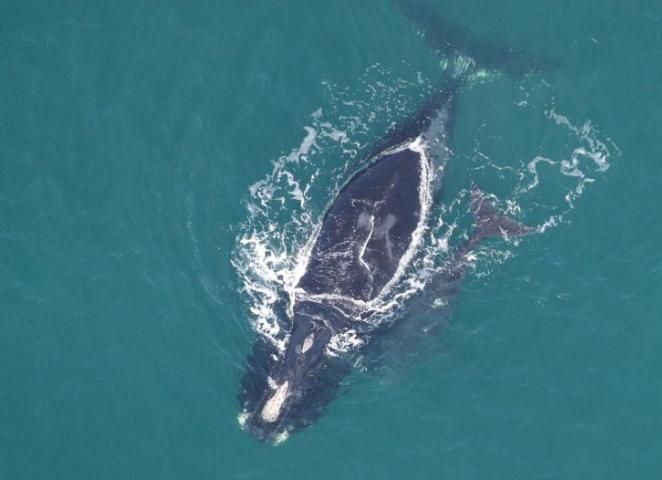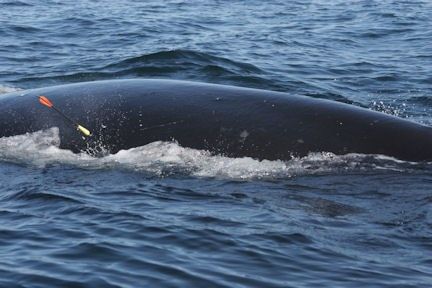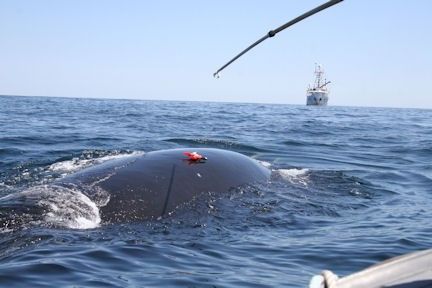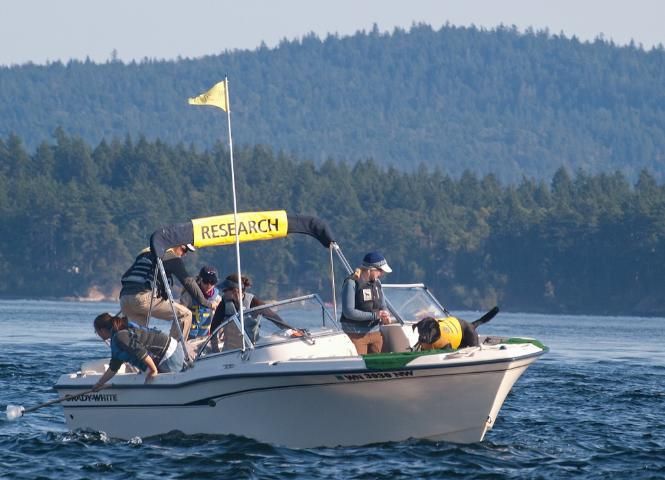Description
Students will learn about the ways that technology is being used to study North Atlantic right whales.
Objectives
By the conclusion of the activities, students will:
- Be able to list at least two different ways that scientists can identify individual North Atlantic right whales
- Be able to list two ways in which blubber can be used to help scientists learn about a whale's health
- Be able to give examples of three different technologies that scientists use to study North Atlantic right whales
What You Will Need
- Copies of "Kleenex" the North Atlantic Right Whale for each student
- Student worksheets (one per student)
- Pencils or pens
Standards
Florida Sunshine State Standards
Science
- SC.4.E.6.5 Investigate how technology and tools help to extend the ability of humans to observe very small things and very large things.
Common Core Standards
English Language Arts
- RI.4.1 Refer to details and examples in a text when explaining what the text says explicitly and when drawing inferences from the text.
- RI.4.10 By the end of year, read and comprehend informational texts, including history/social studies, science, and technical texts, in the grades 4–5 text complexity band proficiently, with scaffolding as needed at the high end of the range.
- L.4.6 Acquire and use accurately grade-appropriate general academic and domain-specific words and phrases, including those that signal precise actions, emotions, or states of being (e.g., quizzed, whined, stammered) and that are basic to a particular topic (e.g., wildlife, conservation, and endangered when discussing animal preservation).
Strategy
- Give students copies of "Kleenex" the North Atlantic Right Whale and the corresponding student worksheet.
- Ask students to read the story and answer the questions on the worksheet.
- Fun fact: Kleenex got her name after her calf Sonnet was born in 1981. At the time, it looked as though the calf had a runny nose—the front part of the callosity was dribbling down.
"Kleenex" the North Atlantic Right Whale
The North Atlantic right whale called Kleenex was first seen in 1997. Scientists know that she has had at least six babies, or calves. When a calf is swimming with an adult whale, we know that adult is the calf's mother. Scientists try to take photographs of the calf and the mother. They can use the right whale photo catalog to identify the mother. It is harder to figure out who the father of the calf is. The father whales do not swim with the mother and calf.

Credit: New England Aquarium
An adult right whale is about the size of a regular school bus. Since 1988, scientists have used arrows with hollow tips to collect small samples of skin and blubber from right whales. When scientists prick the whale with this arrow, the hollow tip collects a sample of the whale's skin and blubber. The sample is about the size of the end of a pencil eraser. For a whale, this process is probably similar to getting a shot at a doctor's office. This tiny piece of skin gives a large amount of information! Scientists can study the whale's blubber to find out types of pollutants to which it has been exposed. They can collect DNA from the skin. DNA is in all living cells. It is like a recipe that contains all of the characteristics of the plant or animal. Scientists have DNA from more than 75% of all North Atlantic right whales.

Every plant and animal's DNA is unique. The DNA of a calf is similar to the DNA of both of its parents. DNA can be used to identify the parents of a particular calf. If scientists have skin samples from the calf and its mother, they will use the DNA to try to find the calf's father. This is how we know which whales are the fathers of two of Kleenex's calves.
In 2001, Kleenex took part in two studies. First, a small time and depth recorder was placed onto her back using a suction cup. The scientists used a crossbow to "shoot" the suction cup onto Kleenex's back, where it stuck. After about an hour and a half, the suction cup came loose and floated to the surface. Scientists were able to collect it and download data from the recorder. This helped them learn about right whale diving and feeding behavior.

In the second study, scientists used a machine called an ultrasound machine. They wanted to find out how thick right whales' blubber was. Kleenex was one of the whales they studied. The ultrasound machine produces a sound wave, then "listens" to the sound waves that bounce back. Waves that bounce off different surfaces make different patterns. In a whale, the sound waves go through the blubber and bounce back off the muscle. Scientists measure how long it takes the sound waves to bounce back. Then, they can estimate the thickness of the blubber layer. The thinner the blubber, the faster the waves will bounce back. The blubber thickness tells scientists if the whales are healthy or not. A whale with a thin blubber layer may be sick.
North Atlantic right whales can be very large. They can measure up to 55 feet in length and can weigh more than 60 tons! It is hard to measure a whale from a boat or land. Scientists used a special camera to measure Kleenex's length. They attached the camera to an airplane and took pictures while flying above Kleenex. They also used these pictures to calculate her girth (the distance around her belly).

Kleenex has helped with one other research project. Scientists are collecting samples of whale poop! They use dogs that have been trained to sniff out floating whale poop. The scientists scoop the sample from the water. They analyze the poop for parasites and chemicals in the body. This tells them if the whales are healthy or stressed. They can also get DNA from the poop!
Student Worksheet—Kleenex the North Atlantic Right Whale
Read the story about Kleenex the whale. Kleenex has been studied by many scientists! Use information from the story to answer the questions.
- Describe one way scientists identify individual whales like Kleenex.
- If a right whale has a thick layer of blubber, is it sick or healthy?
- Circle the correct answer. What do scientists study using time and depth recorders?
a. DNA
b. Diving and feeding behavior
c. The length of whales
d. Blubber thickness
5. Circle all the correct answers. Scientists can tell if a whale is healthy by studying its...
Blubber thickness DNA Blubber Poop
6. Fill in the blank. Kleenex has at least calves.
Answer Key
Read the story about Kleenex the whale. Kleenex has been studied by many scientists! Use information from the story to answer the questions.
- Describe one way scientists identify individual whales like Kleenex.
Possible answers:
- They photograph them and match the pictures to a catalog.
- They dart the animal to collect skin samples, which are sent off to a lab.
- They test DNA from skin samples to identify the whale and match calves with their parents.
2. Scientists use special equipment to measure how thick a whale's blubber is. That equipment is called an ULTRASOUND machine.
3. If a right whale has a thick layer of blubber, is it sick or healthy? HEALTHY
4. Circle the correct answer. What do scientists study using time and depth recorders? (Answer is in bold)
DNA
Diving and feeding behavior
The length of whales
Blubber thickness
5. Circle all the correct answers. Scientists can tell if a whale is healthy by studying its (Answer is in bold)
Blubber thickness DNA Blubber Poop
6. Fill in the blank. Kleenex has at least SIX calves.